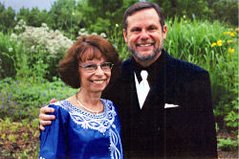Thursday, May 11, 2006
UN Humantiarian Action Plan for DRC
Posted by
CBrulee
at
8:44 PM
0
comments
![]()
![]()
Wednesday, May 10, 2006
Congolese reality a harsh one
- Read the full article, "A Dose of Congolese Reality," at GBGM
Posted by
CBrulee
at
11:15 PM
1 comments
![]()
![]()
Health conditions in Central Africa
The Centers for Disease Control and Prevention (CDC) offers a Travelers' Health series of pages, including this on on health in Central Africa. You can get a feel for the conditions there by reading through their description of precautions for travelers.
Posted by
CBrulee
at
10:46 PM
0
comments
![]()
![]()
Congo's problems
James Traub, in his July 3, 2005 article in the NY Times, "The Congo Case", lays out the historical and present political and social problems in the D.R. Congo. He said, "Few Congolese have access to roads, eletricity, clean water, medical care or almost any other public services". The article is very enlightening, including about the UN role in D.R. Congo. [Viewing this article requires a free registration.]
Posted by
CBrulee
at
10:35 PM
0
comments
![]()
![]()
Tuesday, May 02, 2006
More ways to read these postings
You can always come to this blog's web page to read the posts. That's my personal preference. But if you start subscribing to a "bunch o' blogs", the number of new articles may get large. One way to manage scanning them for what you really want to read is to use a " Feed Reader", which I've mentioned in prior posts. Blog readers (a.k.a. feed readers or RSS readers) come in two basic forms -- web-based and ones installed on your PC. The web-based variety involves setting up an account at Google, Yahoo! or similar wites, then adding blogs to track. You log onto the Web site to see new headlines from the blogs in your list. The local install method gives you a program. When you run the program, many of which look similar to MS Outlook, you "subscribe" to blogs. The program then pulls down information about the blog postings and you read as you like. Here are a few recently touted feed readers (blog readers):
- SharpReader (donationware)
- RSS Bandit (donationware)
Posted by
CBrulee
at
5:28 PM
0
comments
![]()
![]()

